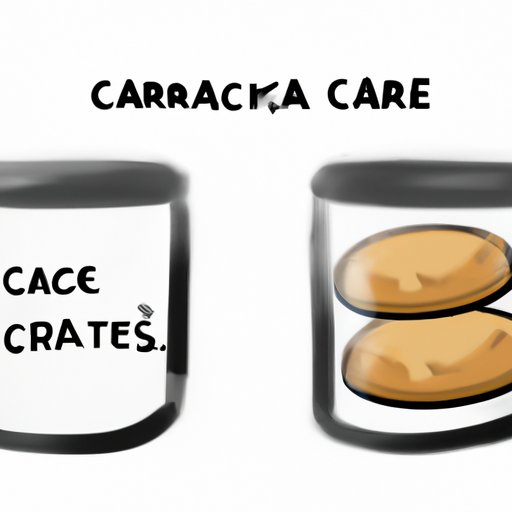
I. Introduction
Have you ever wondered what cache and cookies are and why they can become a problem for your web browsing experience? Simply put, cache is a temporary storage location of website data on your computer while cookies are small files created by websites that help to personalize your browsing experience. Both cache and cookies can take up space on your computer and slow down website loading times. Clearing them from time to time can help to improve your browsing experience.
II. Step-by-Step Guide
Clearing cache and cookies is a simple process that can be done on popular web browsers such as Chrome, Firefox, Safari, and Edge. Here’s a step-by-step guide for each browser:
Chrome
- Open Chrome and click on the three dots in the upper right-hand corner.
- Select “More Tools” and then “Clear browsing data”.
- Choose the time period for which you want to clear data from the drop-down list and check the boxes next to “Cookies and other site data” and “Cached images and files”.
- Click “Clear data”.

Firefox
- Open Firefox and click on the three lines in the upper right-hand corner.
- Select “Options” and then “Privacy & Security”.
- Scroll down to “Cookies and Site Data” and click on “Clear Data”.
- Select the boxes next to “Cookies and Site Data” and “Cached Web Content”.
- Click “Clear”.

Safari
- Open Safari and click on the “Safari” menu in the upper left-hand corner.
- Select “Preferences” and then “Advanced”.
- Check the box next to “Show Develop menu in menu bar”.
- Click on the “Develop” menu and select “Empty Caches”.

Edge
- Open Edge and click on the three dots in the upper right-hand corner.
- Select “Settings” and then “Privacy, search, and services”.
- Under “Clear browsing data”, select “Choose what to clear”.
- Check the boxes next to “Cookies and other site data” and “Cached images and files”.
- Click “Clear now”.

Clearing cache and cookies is quick and simple, and doing so on a regular basis can help to improve website performance and security.
III. Importance and Benefits
Clearing cache and cookies regularly is important for a number of reasons. First, it can help to improve website load times. When you visit a website for the first time, the browser stores data such as images and font files in the cache so that they don’t have to be reloaded every time you visit the site. Over time, the cache can become cluttered, slowing down website load times. Clearing it will help websites load faster.
Second, clearing cache and cookies can improve your security. Cookies can sometimes be used to track your browsing behavior, and the cache can store sensitive information such as login credentials. Clearing them can help to protect your personal information.
IV. Video Tutorial
For those who prefer a visual guide, we’ve put together a video tutorial that walks you through the process of clearing cache and cookies on different web browsers:
The video includes sections for each web browser, including Chrome, Firefox, Safari, and Edge. The tutorial is easy to follow and will help to ensure that you are clearing your cache and cookies properly.
V. Common Problems and Solutions
Clearing cache and cookies can sometimes cause problems, but the good news is that there are solutions for each issue. Here are some common problems that can arise:
Problem: You’re logged out of a website after clearing cache and cookies.
Solution: Clearing cookies deletes login information stored on your computer, so you may need to log back into websites after clearing cookies.
Problem: A website isn’t loading properly after clearing cache and cookies.
Solution: Clearing cache can sometimes cause websites to load improperly or not at all. Refreshing the page or waiting a few minutes can help. You may also need to clear your DNS cache, which can be done by opening the Command Prompt and typing “ipconfig/flushdns” (without quotes).
Problem: Your browser starts to slow down after clearing cache and cookies.
Solution: Clearing cache and cookies can cause your browser to temporarily slow down as it rebuilds its cache, but performance should improve over time.
VI. Frequently Asked Questions
Here are some frequently asked questions about clearing cache and cookies:
Q: Why is it important to clear cache and cookies?
A: Clearing cache and cookies can help to improve website load times and protect your personal information from being tracked.
Q: How often should I clear cache and cookies?
A: It’s recommended that you clear cache and cookies every month or so to keep your computer running smoothly.
Q: Will clearing cache and cookies delete my bookmarks?
A: No, clearing cache and cookies will not delete your bookmarks.
Q: Will clearing cache and cookies log me out of all my accounts?
A: Clearing cookies will delete login information stored on your computer, so you may need to log back into websites after clearing cookies.
VII. Conclusion
Clearing cache and cookies on a regular basis is an important part of maintaining a healthy web browsing experience. From improving website load times to enhancing security, there are many benefits to be had. We hope that this guide has been helpful for you in learning how to clear cache and cookies on popular web browsers. Remember, it’s easy to do and can make a big difference in your online experience.




